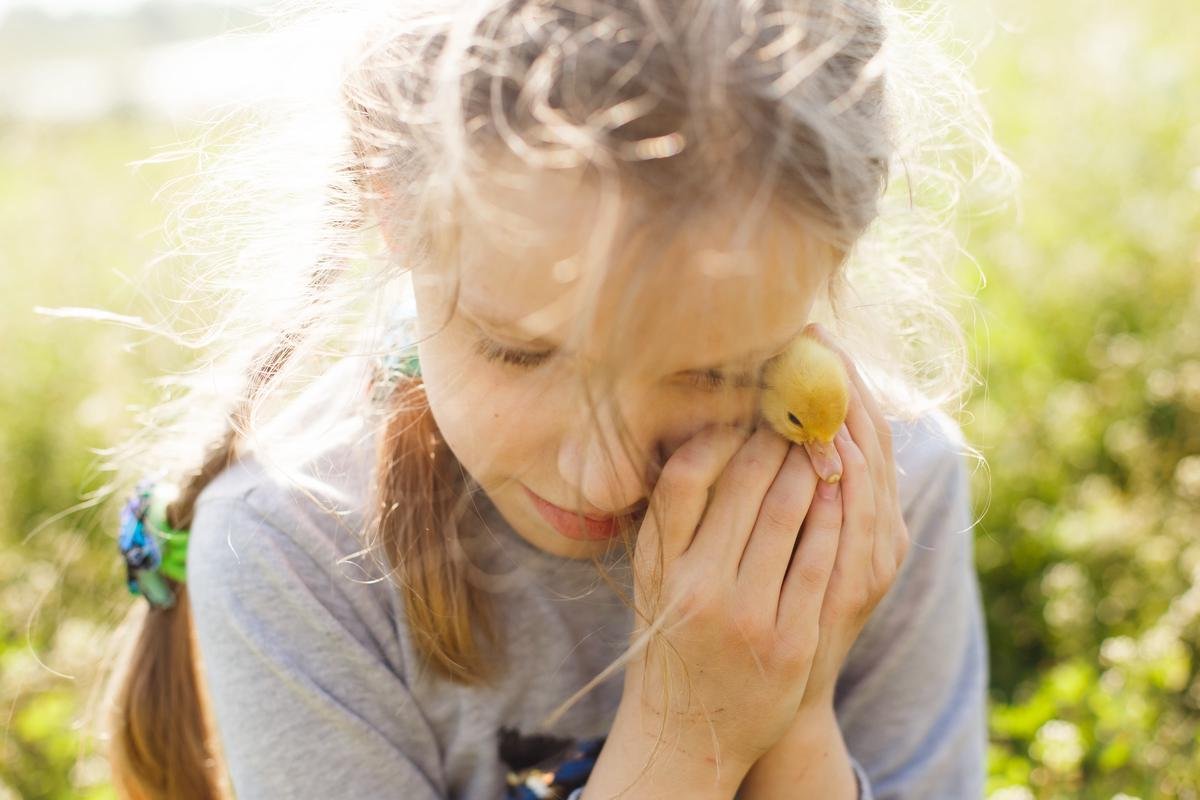
Puberty, a complex period of physical and emotional metamorphosis, tends to be significant for all adolescents, but its impact on those with autism can be particularly multifaceted. Changes such as these not only spur the usual challenges of physical growth, but also unique layers of anxiety, sensitivity, and the navigation of unchartered emotional landscapes for this cohort. This paper offers insight on such diverse yet interconnected elements of puberty as physical, emotional, behavioral and sexual development, with a particular focus on how they manifest in autistic individuals. Special attention is also given to communication strategies, coping mechanisms, and, for girls, the task of preparing for the onset of menstruation — all to provide an in-depth practical guide on puberty for children with autism and those around them.
Understanding puberty in autistic children
Unraveling Puberty: Its Unique Impact on Children with Autism
Embracing change is difficult for almost everyone. If there’s one thing guaranteed to shake things up, it’s the seismic shift of puberty. As parents, we understand the struggle that comes with navigating adolescence and the many physical, emotional, and social changes it brings. But what about when a child on the autistic spectrum faces puberty? How does puberty affect children with autism differently than neurotypical children? Let’s dive right in.
To start, the symptoms of autism can vary greatly from child to child. So it should come as no surprise that experiencing puberty for children on the autism spectrum looks different too. Nevertheless, understanding some common differences can help parents, caregivers, and teachers provide appropriate support during this challenging time.
Firstly, it’s essential to note that children with autism may struggle considerably more with adjusting to the physical changes that accompany puberty. Think sudden growth spurts, voice changes, and the onset of menstruation in girls. These unexpected shifts may lead to an intensification of anxiety, causing them to react intensely or show increased levels of frustration. Understanding this heightened anxiety and providing reassurance can really make a difference for a child going through puberty with autism.
Secondly, puberty’s giant leap into social demands is often more distressing for children with autism than their neurotypical peers. From navigating romantic relationships to understanding the subtle nuances of peer interaction, these elements can be particularly complex for children with autism, whose social communication skills could be uniquely challenged. Encouraging open dialogue about these changes and teaching them about these interactions can provide a necessary cushion of support.
Additionally, the surge of hormones experienced during puberty can ignite an increase in challenging behaviors. For children with autism, this can translate into an escalation of pre-existing patterns of behavior, like ritualistic routines, meltdowns, or resistance to change. Hence, managing this turbulence might require revisiting and adjusting their existing behavior strategies.
However, it’s not all trials and tribulations. Puberty also provides an opportunity for children with autism to grow in unexpected ways. Increased self-awareness might lead to improved self-advocacy skills, and navigating through this personal journey might open doors to newfound resilience and determination.
In conclusion, the experience of puberty in children with autism, while punctuated by unique challenges, also has the potential to offer significant personal growth. As parents, caregivers, and teachers, the key is to provide supportive, understanding, and compassionate guidance throughout this transformative period.
Share this article with the parents and caregivers in your life who might need a little help understanding how to better support their child with autism through puberty. Together, we build a community, a village armed with knowledge and driven by empathy, every step of the way.

Photo by daen_2chinda on Unsplash
Effective communication about puberty
Effective Strategies for Discussing Puberty with Children on the Autism Spectrum
Communicating about puberty can be a challenging task for any parent, but when staging this essential conversation with a child on the autism spectrum, the task may seem particularly daunting. Children with autism often have unique needs and communication styles. Therefore, understanding and employing effective strategies for these discussions is crucial. Although the variability of symptoms creates diverse experiences, there are common ways through which parents can efficiently communicate about puberty.
First off, it’s imperative to start early. It’s generally beneficial to initiate conversations about puberty before children encounter these changes. Autistic children, especially, can benefit from additional time to process information. Much in the same way as you’ve worked tirelessly to prepare them for school or other life changes, laying the groundwork for understanding puberty is essential. This early initiation allows room for questions and matter-of-fact discussions.
Another strategy is making the conversation visual. Use pictures and diagrams to illustrate stages of puberty and bodily changes. This proven tool can facilitate understanding, especially for visual learners or those with autism who may find abstract concepts or verbal descriptions challenging. Illustrations, coupled with clear and literal descriptions, can reduce confusion and misinterpretations.
Complementing these discussions with structured social skills training is another beneficial approach. Teaching children on the spectrum about societal norms and personal boundaries associated with puberty can be exceptionally useful. Creating role plays or utilizing social story books tailored to this topic help foster awareness and understanding of these changes in a familiar context.
Building age-appropriate vocabulary and promoting open dialogue is another crucial factor. Encouraging your child to express their feelings and concerns using specific language can help ward off misunderstandings. Encourage them to ask questions, express feelings, and share any perplexing experiences. A supportive and non-judgmental environment will ease anxiety and make space for important conversations.
Additionally, maintaining routines during this period can offer a sense of security amidst the changes your child is experiencing. Providing predictable schedules reduces anxiety, helping your child manage stressors that come hand in hand with adolescence. Maintaining their favorite activities and routines can create a safe harbor in the midst of the puberty storm.
Lastly, involving everyone in the discussion, not just the child transitioning, proves beneficial in creating a supportive atmosphere. For instance, siblings need to be aware of these changes and establish a deeper understanding of their autistic sibling’s experiences. This inclusive strategy can reduce confusion, friction, and create an environment of empathy and understanding.
Communication about puberty with children on the autism spectrum may come with unique obstacles; however, with thoughtful planning and patience, you can guide your child through this critical juncture in their life. Provide them with the knowledge and skills they need to face these transformations with confidence, and always remember, this is a team effort – you’re not in this alone!

Photo by yulia_dubyna on Unsplash
Coping strategies for managing emotions and behaviors during puberty
Navigating puberty is a struggle for many children. This natural transition can be even more tumultuous for youngsters with autism due to their unique emotional and sensory processing needs. With that being said, there’s no need to fret. Plenty of strategies can make this complex developmental stage easier for autistic kids, and for you as a caregiver.
Let’s get right to it!
Regularly practicing calming exercises and introducing coping mechanisms from a young age could come in handy for an autistic child facing the emotional and behavioral changes during puberty. Simple and easily incorporated activities like deep-breathing, mindfulness, or yoga may offer significant help during moments of stress or anxiety.
As puberty arrives, retaining a visual routine becomes essential. It’s beneficial to utilize visual schedules to communicate what to expect daily, weekly, and even monthly. Knowing “what’s next” brings comfort and reduces anxiety.
Motivational strategies always do wonders. Leverage your child’s interests to encourage positive behavior and make potentially challenging tasks more appealing. Discussing personal hygiene or biological changes can become more engaging when tied to a favorite character or topic.
Regular physical activity is another potential strategy. Exercise serves as an excellent stress reducer and might further help to manage increased frustration. A mix of solo and group exercises like swimming, biking, or martial arts classes could be effective, promoting both mental and physical health.
Educational materials aimed at teaching emotional literacy are a goldmine. Workbooks, online resources, or therapeutic tools can aid them in recognizing, naming, and managing their emotions. It equips them with the vocabulary needed during these transformative years.
It’s essential to maintain a safe and supportive environment for your child. Increased patience, understanding, and love go a long way in helping them cope with the new challenges of puberty.
Finally, don’t underestimate the power of professional help. On top of your support as parents, involving therapists, counselors, or teachers can be incredibly helpful. They can offer valuable insights, practical strategies, and further resources tailored specifically to your child’s needs.
In a nutshell, main strategies for helping autistic children navigate puberty involve healthy coping mechanisms, clear communication, maintaining routines, motivational strategies, physical activities, emotional literacy materials, creating a nurturing environment, and the assistance of professionals. Remember, every child is different, and what works for one might not work for another. Your understanding, patience and, consistent efforts in implementing these strategies will indeed bring forth the desired results. In the journey of helping your child grow, you might discover the incredible strength you possess too!

Preparing for menstruation in autistic girls
As parents, navigating the journey of puberty with any teenager can be a challenging task. However, when it comes to preparing your autistic daughter for menstruation, there is an added layer of complexity that must be tactfully handled. It’s worth noting, menstruation might be a daunting prospect for some autistic girls owing to their heightened sensory sensitivities and difficulty adapting to change. Nonetheless, there are several strategies parents can adopt to make the transition smoother.
While talking about periods, it’s fundamental to approach this topic using clear, straightforward language. Avoid using euphemisms that could confuse your daughter. The use of social stories can be advantageous in this context. They can effectively break down the concept of menstruation into understandable segments, thereby demystifying the process altogether.
Personal hygiene is another key area to address. Guiding your daughter in understanding the importance of changing pads or tampons regularly, washing thoroughly, and appropriately disposing of products is critical. Using step-by-step instructions or even illustrative aids to explain these tasks will be extremely helpful.
While periods are natural, they can indeed come with discomfort. It’s prudent to discuss potential physical symptoms, such as cramps and bloating, with your daughter and offer viable solutions for managing them. For instance, highlighting the benefits of heat packs, gentle exercises, and over-the-counter pain remedies will ensure they are well-equipped to handle these challenges.
Every parent knows the value of a routine, and maintaining this for your autistic daughter during her periods will help ease any anxiety she might feel. Ensuring she knows when to expect her period and what to do when it arrives, like packing an emergency kit with essentials, can help her prepare mentally and emotionally for the change.
Since autistic individuals can sometimes struggle to recognize and process their emotions, it’s essential to provide tools to aid emotional understanding. Apps and games designed to assist emotional literacy can be great tools for this, helping your daughter identify and aptly express her feelings during her cycle.
A key part of this journey lies in creating a nurturing, safe space for conversation around periods. Make sure your daughter knows she can come to you with her thoughts, concerns, or fears about menstruation without judgment.
Involve other family members, particularly female members who have personal experience, to offer various perspectives and tips. This will not only help your daughter understand menstruation better but will also normalize it as a natural biological process.
Lastly, while personalized strategies are invaluable, professional help serves as a cornerstone for constructive support. Mental health professionals, physicians, or autism specialists can provide tailored advice, recommend resources, and make this transition smoother for your daughter.
Never forget, every child is unique, thus, what may work for one may not work for the other. Be patient, empathetic, and reassure your child that they’re not alone in this journey. By doing so, you’ll be setting the groundwork for their better understanding and acceptance of this new phase in their life.

Understanding and addressing sexual development in an autistic child
As follows, we’ll dive right into discussing our focal topic – sexual development, a topic difficult for teenagers in general, but even more so for those on the autism spectrum.
To discern the manifestation of sexual development in autistic teenagers, understanding the different ways that autistic teenagers experience these changes crucial. Teenagers with autism might develop attraction to others later or earlier than their peers, and the intensity of these emotions might feel overwhelming. Elevated sensitivity- a common trait found in persons with autism, means bodily changes could amplify feelings of awkwardness or embarrassment. There might also be a struggle to understand or categorize these new emotions.
Autistic teenagers often have interests that seem different, or perhaps even unusual to others. Sometimes, these interests may extend to their developing sexuality. This isn’t necessarily bad or wrong, but it might benefit from a bit of guidance to better fit within society’s norms.
Understanding and navigating social cues revolving around crushes, dating, or sexuality often proves challenging for those on the autism spectrum. This may lead to perceived inappropriate behavior or misunderstandings, which in turn can result in mockery by their peers, further escalating their emotional distress.
It’s important to note that teenagers within the autism spectrum are just as diverse as any group of teenagers. What applies to one teenager might not apply to another. However, a common setback may arise in the form of difficulty in expressing complex emotions, which is further heightened with puberty hormones and emerging sexual feelings.
Approaching these tricky topics and helping teenagers on the autism spectrum navigate this journey is a careful balancing act that requires patience, understanding, and an open mind. As emphasized earlier, every teenager on the spectrum is unique, and their journey will be too.
Addressing the sexual development of teenagers with autism begins with an objective acknowledgment of their sexuality. It is essential for them to understand their changing bodies, emotions, and relationships. For many teenagers, learning about these changes in a forthcoming environment introduces a sense of normalcy. However, adapting this education to fit the unique requirements of teenagers with autism is key to their understanding and overall handling of this period.
Our sources are online academic articles, medical journals, blogs by parents of autistic teenagers, and firsthand accounts from people within the autistic community.
Offering factual, honest, and user-appropriate information is pivotal. This might mean exploring tailored resources that are visual, straightforward, or tangible, such as social stories addressing sexual development, online resources containing clear visual aids, or interactive apps explaining the changes that teenagers go through.
Incorporating sex education from a responsible adult such as parents, mentors, or educators helping to correct misconceptions and stigma, while providing a safe space for teenagers on the spectrum to voice their concerns is crucial.
Beyond the physical changes, there’s the emotional side of things. Teaching the nuances of emotional literacy, which includes the appropriate expression of these emotions, helps them navigate relationships. Devising strategies to separate feelings from behaviors is also essential to prevent potential misunderstandings or inappropriate actions.
Finally, Parents can help autistic adolescents handle sexual development by fostering open communication and providing steady guidance, cultivating an atmosphere of acceptance, and empowering them to manage their unique journey through puberty with confidence and understanding.

In essence, each child’s journey through adolescence is unique – and thus, their understanding and experience of puberty can be radically different. For autistic individuals, this period of change can be overwhelming, interspersed with challenges that reflect distinct sensitivities and expectations. But with thoughtful navigation, clear communication, and effective coping strategies, this transition can be managed with greater ease. Moreover, with a deeper understanding of sexual development and relationships, it’s possible to educate autistic teenagers on the nuances of consent and boundaries – anchoring them in knowledge and safety. The ultimate aim is to empower these individuals, enabling them to journey through adolescence with confidence, and easing the path of their voyage into adulthood.




